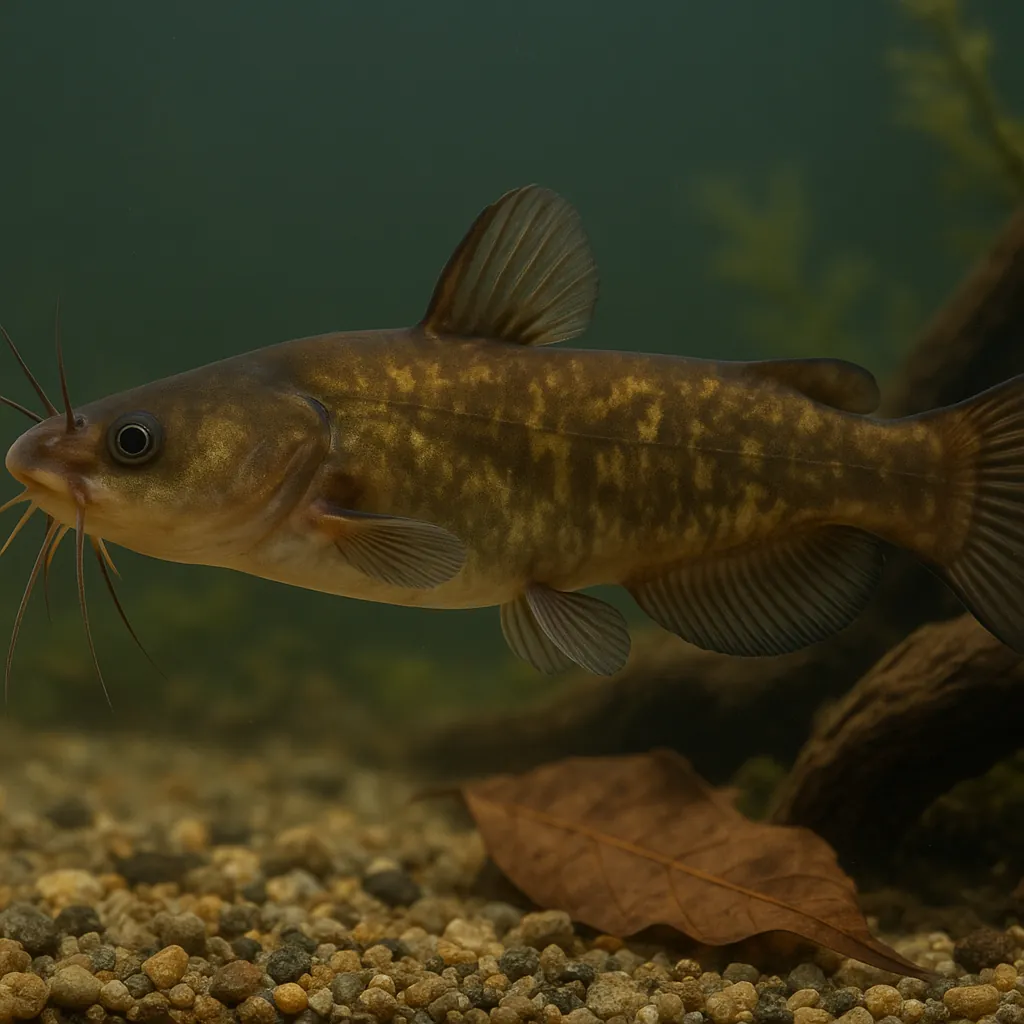
Brown bullhead
Introduction
The Brown Bullhead (Ameiurus nebulosus) is a hardy and adaptable freshwater catfish native to North America. Known for its distinctive mottled brown coloration and whisker-like barbels, this species appeals to aquarists seeking a robust and low-maintenance fish. While its resilience makes it suitable for beginners, its potential size and specific care requirements necessitate careful consideration.
Care and Environment
Caring for a Brown Bullhead requires attention to tank size, water parameters, and habitat setup to ensure a healthy environment.
What is the minimum tank size for a Brown Bullhead?
A single Brown Bullhead requires a minimum tank size of 200 liters to accommodate its growth and activity levels.
What are the ideal water parameters for Brown Bullheads?
Maintain a temperature range of 15–28°C, a pH between 6.3 and 7.5, and water hardness from 5 to 21°N (89.29–375 ppm).
How should the tank be set up for a Brown Bullhead?
Provide a soft substrate of sand or fine gravel, along with hiding spots like caves or driftwood. Ensure the tank has ample open space for swimming. A strong filtration system is essential to handle the waste produced by this species.
Brown Bullheads are omnivorous and will consume a variety of foods, including sinking pellets, live or frozen foods like worms and shrimp, and plant matter. Feed them once or twice daily, offering only what they can consume in a few minutes to prevent overfeeding.
Be aware that Brown Bullheads can be territorial, especially during breeding seasons, and may exhibit aggression towards smaller tank mates. Regular monitoring and maintenance are crucial to keep the environment stable and the fish healthy.
Origin and Habitat
The Brown Bullhead is native to North America, inhabiting a range from Canada to Louisiana. It thrives in various freshwater environments, including lakes, ponds, and slow-moving rivers with muddy or silty substrates. This species is adaptable and can tolerate low oxygen levels and polluted waters, often found in areas with soft bottoms and abundant vegetation.
Temperament and Compatibility
Brown Bullheads are generally peaceful but can become aggressive towards smaller fish, especially during spawning periods. They are not shoaling fish and prefer solitary or small group settings.
What tank mates are suitable for Brown Bullheads?
Suitable tank mates include similarly sized, robust fish such as sunfish or large carp species. Avoid housing them with smaller fish that they may view as prey.
How can aggression be minimized in a tank with Brown Bullheads?
Providing ample hiding spaces and ensuring a spacious environment can help reduce territorial behavior and aggression.
Are Brown Bullheads suitable for community tanks?
Due to their size and potential aggression, they are best kept in species-specific tanks or with carefully chosen tank mates.
Interesting Facts
Brown Bullheads are known for their resilience, capable of surviving in environments with low oxygen levels and high pollution. They are primarily nocturnal feeders but can adapt to daytime feeding schedules in captivity. Additionally, they possess venomous spines on their pectoral fins, which can cause painful stings if not handled carefully.
Sources
All information in this article has been gathered from the following reputable sources:
Overview
Recommended Tank Size 105.7 Gallons (for optimal conditions or for keeping multiple individuals) |
Minimum Group Size 1 |
Minimum Tank Volume 52.8 Gallons |
Maximum Adult Length 19.7 inches |
Average Adult Length 17.7 inches |
Shoaling (6+ required) No |
Preferred Water Type Freshwater, adaptable to various conditions |
Temperature Range (°C) 15–28 |
pH Range 6.3–7.5 |
Water Hardness (dGH) 5–21 |
Typical Lifespan (years) 6 years |